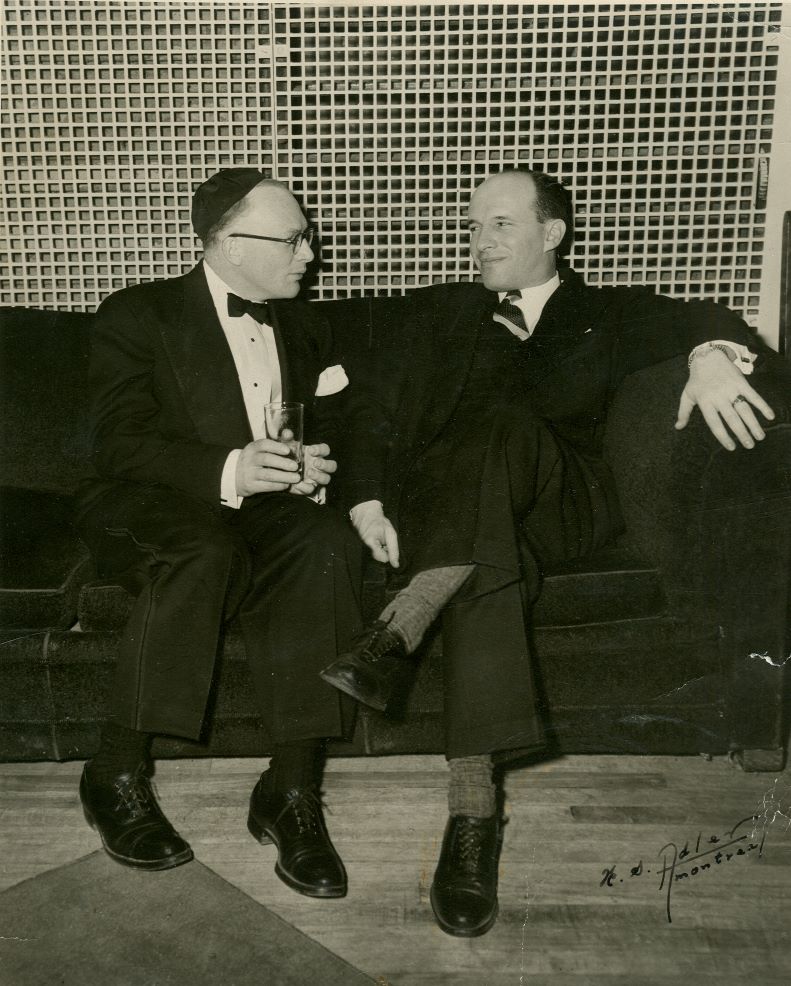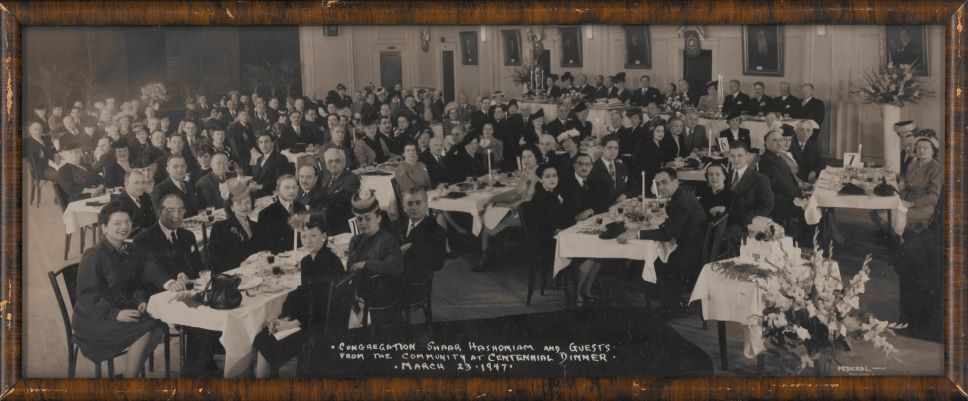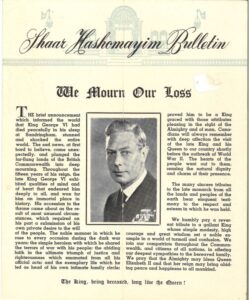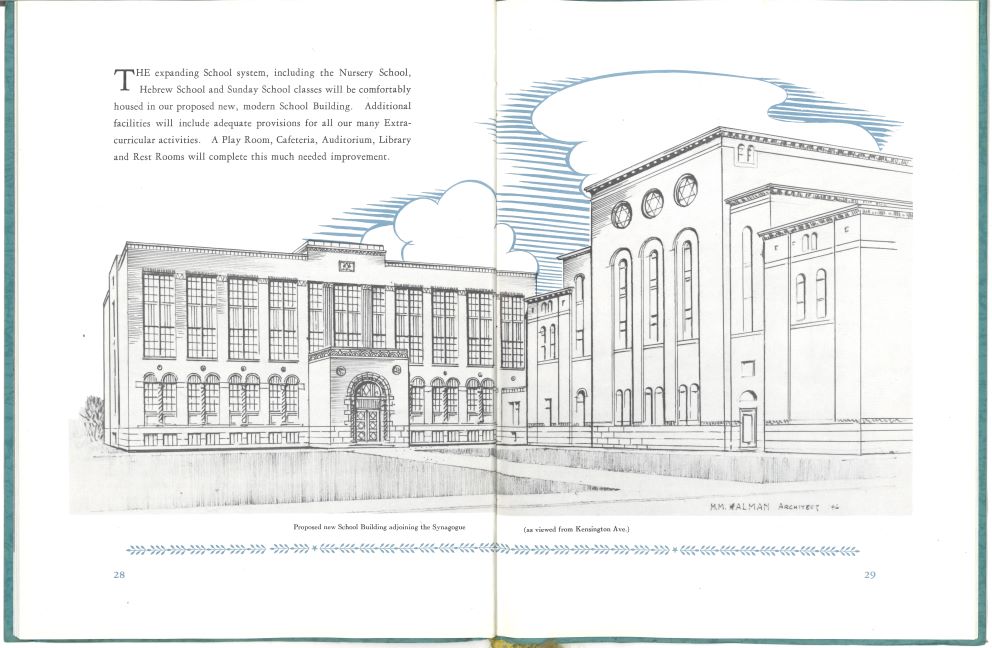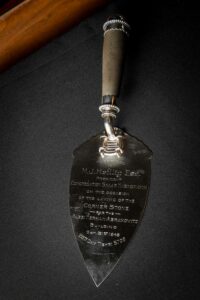Part 6: The Post-War Boom
Hiring Rabbi Shuchat
In the wake of World War II, Rabbi Abramowitz’s health was in decline. The synagogue thus hired an assistant rabbi: Rabbi Wilfred Shuchat, a born-and-raised Montrealer who, at the young age of 26, had just completed his rabbinical training at the Jewish Theological Seminary. He was officially hired in 1946 and would go on to be the Congregation’s longest-serving rabbi.
The Centennial Year
In 1946–1947, the Shaar marked a major milestone anniversary: 100 years since its founding. The central hub for the year’s celebrations was the synagogue’s building, where many dinners and events were held. It was at one such dinner that Rabbi Abramowitz made one of his final appearances in the synagogue.
Death of Rabbi Abramowitz

The front page of the Shaar Hashomayim bulletin announcing the passing of Rabbi Herman Abramowitz in October 1947.
Rabbi Abramowitz passed away on the eve of Yom Kippur—the holiest day on the Jewish calendar—in October 1947. His death was mourned greatly by the Congregation and across the city. His funeral was one of only a few held in the Shaar’s sanctuary and was attended by hundreds of people, including several hundred of his Masonic brethren.
Further Notable Events for the Synagogue and its Community
Aside from important shifts in the synagogue’s rabbinic leadership, the Shaar marked many important occasions of the 1940s and 1950s in its sanctuary, including special services commemorating the death of King George VI and the subsequent coronation of Queen Elizabeth II.
There were new innovations in the music department too. In 1952 a special service for Shabbat Shirah (the Sabbath when the Torah portion containing the Song of the Sea is read) was introduced. The music was composed by long-time choir director Professor Jacob Rosemarin, who had been with the Congregation since 1943.
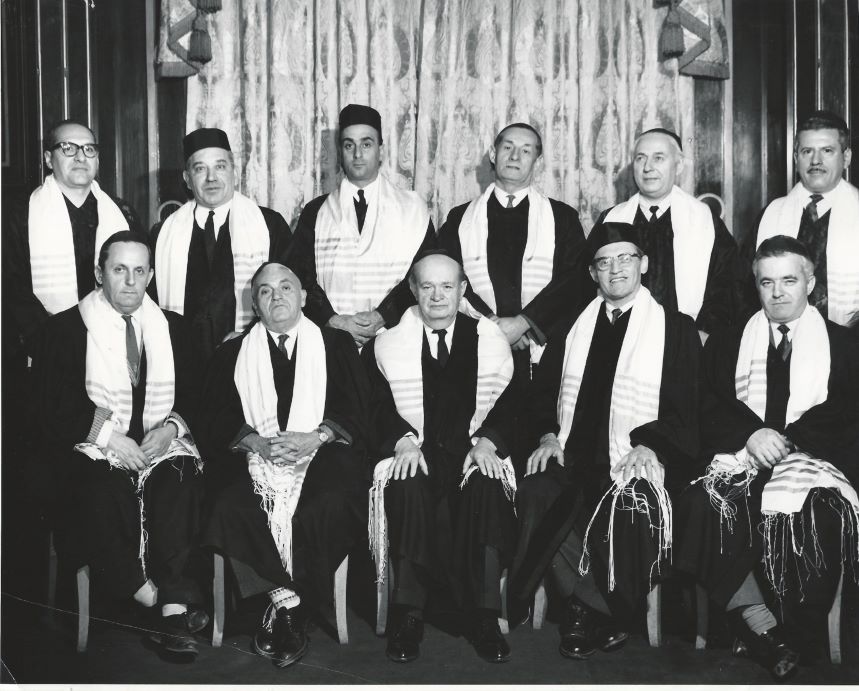
Shaar Hashomayim Choir, 1950s. Sitting front row centre is Choir Director, Professor Jacob Rosemarin.
After the Second World War, the congregation experienced yet another boom and its membership grew in large numbers. One consequence was an increased demand for space to house educational activities for the synagogue’s youth, which had been a longtime the goal of Rabbi Herman Abramowitz. The Shaar’s Westmount building was already bursting at the seams. While World War II did delay progress, by the time of the Shaar’s centennial year the necessary funds were secured for the construction of the educational centre.
Finally, on October 31, 1948, the Congregation opened and dedicated the newly established Rabbi Herman Abramowitz Educational Annex adjacent to the synagogue—a fitting tribute to its longtime leader. The cornerstone was laid by synagogue President Moses J. Heillig (notable as the longest ever serving member of the synagogue’s board), who was presented with a commemorative silver trowel.


